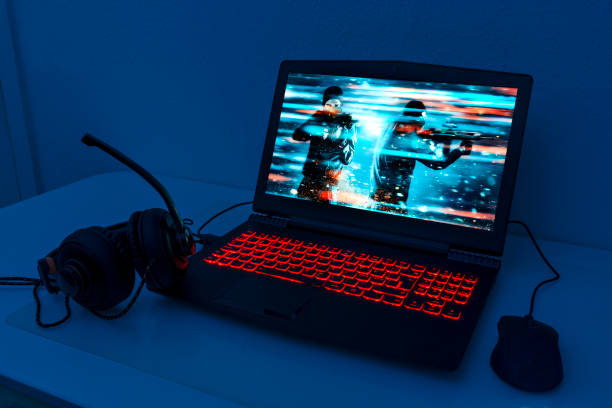Gaming has become a part of life for most youths all around the world, especially Nigerian youths. There has always been a problem finding the right laptop to launch massive programs or play high-end games and without the right information most people end up getting less than they desired.
Gaming laptops have become more portable in terms of size, and weight and basically, they have become more powerful, which optimizes energy efficiency to increase their performance.
With analysis, here are a few things to look out for in a gaming laptop;
- A CPU that is powerful in terms of cores/processors and speeds
- A graphics card/ chip powerful enough to support high resolutions (this would help avoid loss of details in the graphics)
- A high/good system RAM and storage
- A good resolution screen
The Right Processors
When we think of processors the most common which comes to mind is Intel which is the leading manufacturer of laptop chips worldwide, Kaby Lake is Intel’s codename for its 7th generation Core microprocessor family announced on August 30, 2016, and is produced using a 14-nanometer manufacturing process technology. It works well with the requirements of a portable gaming device. However, the 8th and last generation codenamed Coffee Lake is more energy-efficient, while improving performance considerably. Many of the newly made gaming laptops have eighth-generation chips, but selecting a previous generation from the previous year could reduce the strain it would have on your pockets. With cores being released (like the new Intel Core i9, which has made its appearance on some laptops, including Apple’s MacBook Pro) you can be certain of improvements in the performance of a gaming system.
The Graphics Card/Chip
The graphics card is the most important component of any gaming laptop, as it does the majority of the work when games run on your computer, freeing up the workload on the CPU. Also unlike a desktop pc, you cannot access the insides of a laptop to update or replace the graphics card at any given time, hence your initial choice for a gaming laptop will be permanent. Graphics cards you should keep in mind when getting a gaming system are Nvidia GTX 1080 Ti, 1080, 1070, 1060, and 1050. The GTX 1050 and 1050Ti are used more in gaming laptops and are relatively cheaper to use.
RAM And Storage
SSD (solid-state storage drive), greatly improved performance over traditional hard disk drives (HDD). Turning on a PC, starting programs, and opening and saving files, has changed considerably, which reduces time. Although SSD will not make a game run faster, it can reduce loading times between levels, and cause them to start faster. The only problem with an SSD drive would be its low storage space, hence it will be advisable to get an SSD in which to install the operating system of the laptop (System drive), with the option of a large hard disk in the installation of the games (external drive) due to the vast amount of space games require.
A 16GB RAM would be the optimum amount needed to properly run your games, with 8GB being the lowest you should get. 32GB and above is considered overkill because most games won’t make any use of it. Unless you’re big on productivity tasks or just simply futureproofing, 16GB is just right. It should be a DDR (Double Data Rate Synchronous Dynamic RAM like DDR SDRAM, DDR2, DDR3, and DDR4) type.
Resolution Screen
Laptop screens have improved considerably to offer resolutions like Full HD (1980 x 1080 pixels). When searching look among the offer of laptops with IPS panels, which provide a broad and consistent visualization from all possible angles, a better contrast ratio, and a wider and more realistic range of colors. Keep in mind that for most gamers, FHD (1920 x 1080) or QHD (2560 x 1440) will offer enough values to be able to represent a high level of detail, with very acceptable FPS display ratios. If you want a smoother viewing experience, you can purchase 1080p or 1440p models with a refresh rate of between 120 and 144 Hz, values that are handled by the Razer Blade 15 or Asus ROG Scar 2. The price of laptops also is affected by the resolution of the screen, especially with higher definitions than HD, such as UHD or 4K, the graphics card will need to offer higher performance to run the games.
When getting a laptop for the purpose of gaming after considering the specifications it is necessary to take a look at its cost because the higher the specs the higher the price of the laptop. Using this specification, I hope you have received the appropriate information to help you purchase your new gaming laptop.










